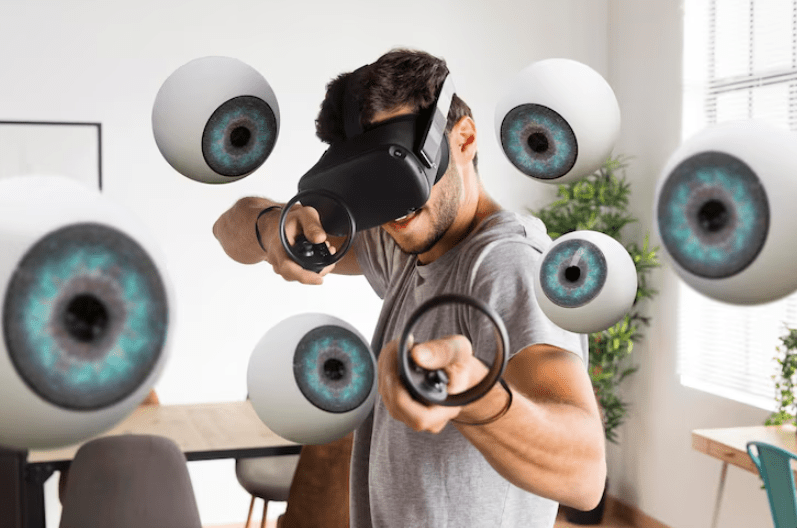The world is rapidly transitioning from paper to digital, and optical recognition software is at the heart of this transformation. By converting images of text into editable, machine-readable data, this advanced technology accelerates workflows, improves accuracy, and enables powerful data insights across industries.
The potential of OCR is reflected in its market trajectory: the global OCR market is projected to grow from USD 13.95 billion in 2024 to USD 46.09 billion by 2033, at a compound annual growth rate of approximately 13%.
What Is Optical Recognition Software?
Optical Recognition Software, often called Optical Character Recognition (OCR), is a technology that identifies text within digital images, typically scanned documents, PDFs, or photos of printed material. It allows machines to “read” and convert printed or handwritten text into machine-readable data.
Modern OCR solutions are powered by AI and machine learning algorithms that can handle:
- Typed and handwritten content
- Complex document layouts
- Multiple languages
- Structured and unstructured data
A leading solution like optical recognition software can even extract data from invoices, bank statements, contracts, and ID cards with near-human accuracy.
How OCR Works: Step-by-Step Breakdown
- Image Preprocessing: The input (e.g., a scanned receipt or form) is cleaned to remove noise, skew, or distortion. This includes binarization (turning it black and white), deskewing, and contrast enhancement.
- Text Detection: OCR engines identify blocks of text within the image. This is often done using convolutional neural networks (CNNs) or edge detection algorithms that understand where text starts and ends.
- Character Segmentation: Once text blocks are located, each character is isolated. In printed text, this is straightforward—but in cursive or handwriting, it’s more complex and relies on advanced pattern recognition.
- Feature Extraction and Recognition: Using machine learning models or template matching, each character is compared against known patterns or trained datasets to determine what it represents.
- Post-processing with NLP: To improve accuracy, OCR systems use natural language processing (NLP) to correct errors based on grammar, dictionary matches, or domain-specific rules.
Types of OCR
- Traditional OCR: Best for printed, clean documents with standard fonts.
- Intelligent Character Recognition (ICR): Reads cursive or stylized handwriting.
- Optical Mark Recognition (OMR): Detects marks or checkboxes, useful in forms and surveys.
- Zonal OCR: Focuses on extracting information from specific regions of a document (e.g., invoice numbers or dates).
Advancements with AI and Deep Learning
Modern OCR has been supercharged by deep learning. AI-based systems can now:
- Detect multilingual text
- Understand unstructured layouts (like magazine articles or receipts)
- Classify document types automatically
- Learn from corrections over time to reduce error rates
According to a recent report by IMARC Group, OCR’s growth is largely driven by its adoption in banking, healthcare, legal, and logistics sectors, industries where structured and unstructured document processing is routine.
Common Use Cases of Optical Recognition Software
Optical recognition software is now a vital component in streamlining data extraction and document handling across industries. Here are some of the most common and impactful applications:
1. Invoice and Receipt Processing
OCR helps businesses automatically extract data like vendor names, invoice numbers, and totals from scanned receipts and invoices, reducing manual entry and improving accounts payable efficiency.
2. ID and Passport Scanning
Airports, banks, and government agencies use OCR to quickly read and verify information from passports, driver’s licenses, and ID cards, enhancing both security and onboarding speed.
3. Healthcare Records Digitization
Hospitals use OCR to convert handwritten or printed patient records into digital formats, making it easier to store, search, and analyze patient history while maintaining compliance.
4. Legal Document Management
Law firms process high volumes of case files, contracts, and court documents. OCR enables faster keyword searches, contract clause detection, and archiving.
5. Logistics and Shipping Labels
OCR captures shipment IDs, tracking numbers, and addresses from printed labels, automating package routing, reducing human error, and accelerating delivery.
6. Banking and Financial Forms
From check scanning to loan applications, OCR accelerates processing by extracting structured data, enabling faster approvals and reduced paperwork delays.
7. Educational Testing and Forms
Schools and testing agencies use OCR and Optical Mark Recognition (OMR) to grade multiple-choice answer sheets, evaluate handwritten responses, and digitize academic records.
Final Words
From automating tedious data entry to enhancing compliance and operational speed, optical recognition software is no longer just a backend utility, it’s a competitive advantage. As AI-powered OCR continues to evolve, it’s enabling businesses to process documents smarter, faster, and with greater accuracy.
Whether you’re in finance, healthcare, logistics, or legal services, adopting the right optical recognition software can dramatically improve how your team handles documents, reducing manual workloads and boosting data-driven decision-making. The future of document processing is intelligent, and it’s already here.

